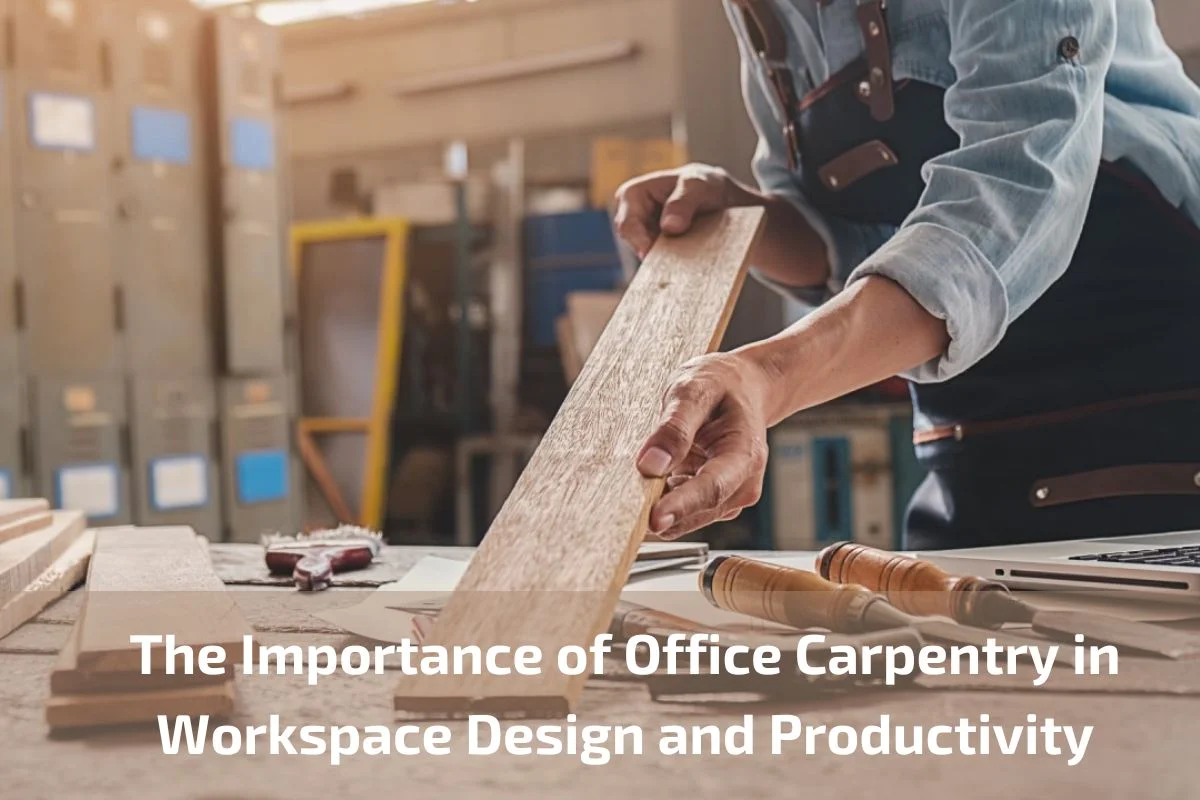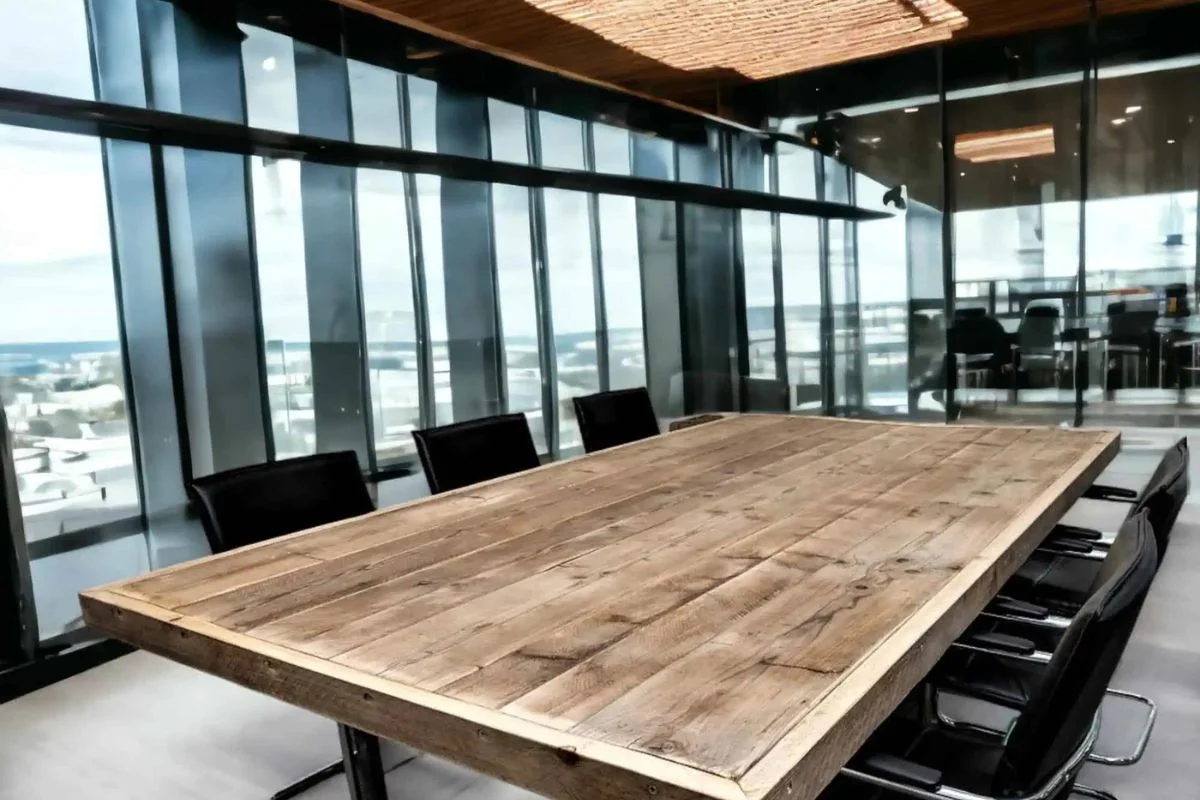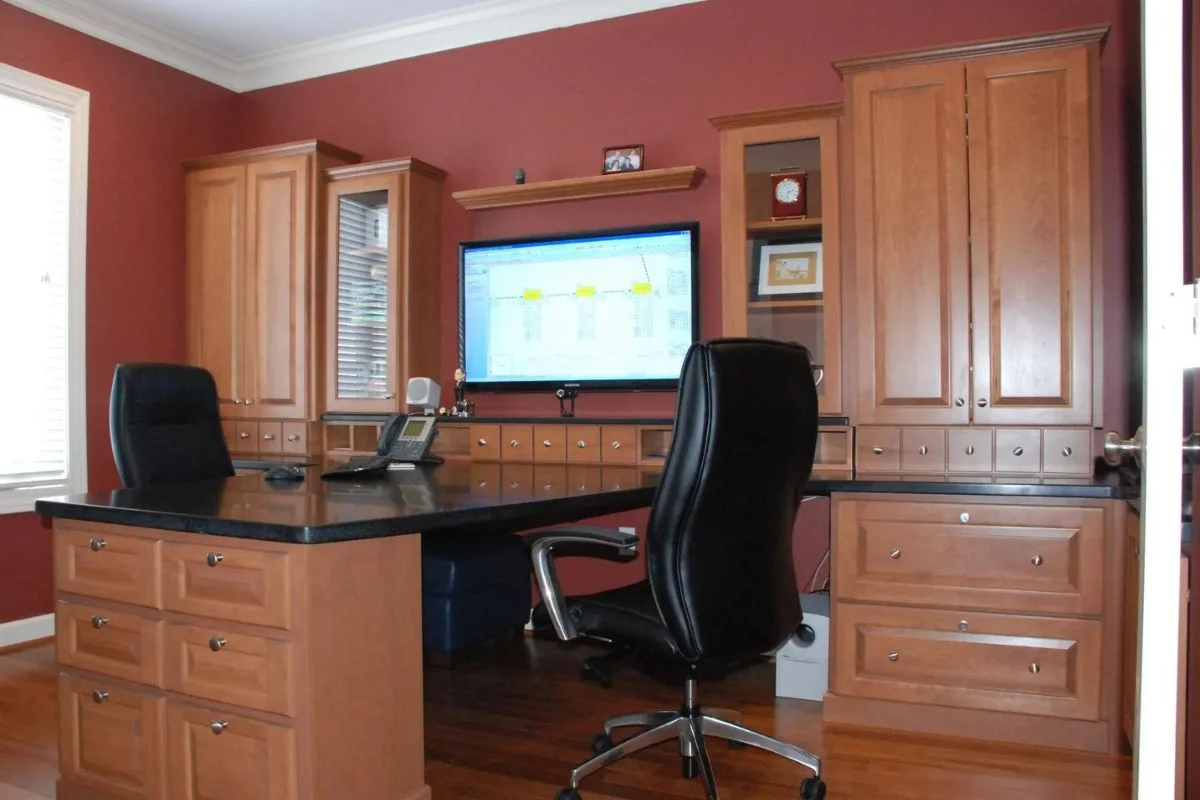The Importance of Office Carpentry in Workspace Design and Productivity
In the modern workplace, office design plays a crucial role in shaping the atmosphere, functionality, and productivity of the workspace. While much attention is often given to elements like furniture, lighting, and layout, the importance of office carpentry in workspace design cannot be overstated. From custom cabinetry and shelving to bespoke furniture and architectural details, office carpentry contributes significantly to creating a workspace that is both functional and aesthetically pleasing.
In this guide, we’ll explore the importance of office carpentry in workspace design and productivity. We’ll delve into how well-crafted carpentry elements can enhance organization, optimize space utilization, and foster a conducive environment for collaboration and focus. Whether it’s creating a streamlined storage solution for paperwork and supplies or designing bespoke workstations that cater to the specific needs of employees, office carpentry plays a crucial role in shaping the overall efficiency and effectiveness of the workspace.
Brief overview of the importance of office carpentry in workspace design
Office carpentry plays a crucial role in workspace design, contributing to both the functionality and aesthetics of the office environment. Here’s a brief overview of its importance:
- Customization: Office carpentry allows for the creation of custom solutions tailored to the specific needs of the workspace. From custom cabinets and shelving to bespoke furniture and architectural details, carpentry ensures that every aspect of the office is designed to maximize efficiency and productivity.
- Space Optimization: Well-crafted carpentry elements can optimize space utilization in the office, making the most of limited square footage. Custom cabinetry and shelving provide ample storage solutions, while built-in furniture helps maximize floor space, creating a more open and organized environment.
- Professionalism: High-quality carpentry adds a touch of professionalism to the office environment, enhancing the company’s brand image and reputation. Well-crafted furniture and architectural details create a polished and inviting atmosphere, making a positive impression on clients, visitors, and employees alike.
- Functionality: Office carpentry enhances the functionality of the workspace by providing practical solutions for storage, organization, and workflow. Custom-built desks, workstations, and conference tables are designed to meet the specific needs of employees, ensuring comfort and efficiency throughout the workday.
- Aesthetics: In addition to functionality, office carpentry also plays a significant role in enhancing the aesthetics of the workspace. Well-designed carpentry elements add visual interest and personality to the office environment, creating a more inspiring and enjoyable place to work.
The Role of Office Carpentry in Workspace Design
The role of office carpentry in workspace design is multifaceted, contributing to both the functionality and aesthetics of the workplace environment. Here’s a closer look at how office carpentry plays a pivotal role in shaping workspace design:
Customization: Office carpentry allows for the creation of custom solutions tailored to the specific needs of the workspace. Whether it’s designing custom cabinets, shelving units, or desks, carpentry enables businesses to optimize their workspace layout and storage solutions to maximize efficiency and productivity.
Space Optimization: Well-designed carpentry elements can help optimize space utilization in the office. By creating built-in storage solutions, such as overhead cabinets or under-desk drawers, carpentry helps minimize clutter and make the most of limited square footage, creating a more organized and efficient workspace.
Functionality: Office carpentry enhances the functionality of the workspace by providing practical solutions for storage, organization, and workflow. Custom-built desks, workstations, and conference tables are designed to meet the specific needs of employees, providing ergonomic support and facilitating collaboration and productivity.
Aesthetics: In addition to functionality, office carpentry also plays a significant role in enhancing the aesthetics of the workspace. Well-crafted carpentry elements, such as architectural millwork, trim carpentry, and decorative accents, add visual interest and personality to the office environment, creating a more inviting and inspiring place to work.
Brand Image: High-quality carpentry can help reinforce a company’s brand image and values. By investing in well-crafted furniture and architectural details, businesses can create a professional and polished workspace that reflects their brand identity, making a positive impression on clients, visitors, and employees alike.
Benefits of Professional Office Carpentry Services
Professional office carpentry services offer a multitude of benefits for businesses looking to enhance their workspace environment. Here are some key advantages:
Customization: Professional carpenters can create custom solutions tailored to the specific needs and preferences of the business. From custom-built desks and workstations to bespoke storage solutions, customized carpentry ensures that every aspect of the office space is optimized for functionality and efficiency.
Quality Craftsmanship: Professional carpenters possess the skills, expertise, and tools necessary to deliver high-quality craftsmanship. Their attention to detail and commitment to excellence ensure that every carpentry project is completed to the highest standards, resulting in durable and long-lasting furniture and fixtures.
Optimized Space Utilization: Professional carpenters can help maximize space utilization in the office by designing and installing built-in storage solutions and furniture. By utilizing every available inch of space efficiently, businesses can create a more organized and clutter-free workspace, promoting productivity and efficiency.
Enhanced Aesthetics: Well-crafted carpentry can significantly enhance the aesthetics of the office environment. Professional carpenters can create custom architectural details, decorative accents, and finishing touches that add visual interest and personality to the space, creating a more inviting and inspiring atmosphere for employees and clients alike.
Increased Productivity: A well-designed and organized workspace can have a positive impact on employee productivity and morale. By investing in professional office carpentry services, businesses can create a more functional and ergonomic workspace that supports employee comfort and efficiency, leading to increased productivity and job satisfaction.
Brand Image: The appearance and quality of the office environment can reflect positively on a company’s brand image and reputation. Professional office carpentry services can help businesses create a professional and polished workspace that conveys professionalism, attention to detail, and a commitment to excellence, making a positive impression on clients, visitors, and employees.
Tips for Working with Office Carpentry Professional
Working with office carpentry professionals can ensure that your project runs smoothly and meets your expectations. Here are some tips for effectively collaborating with office carpentry professionals:
Communicate Your Needs Clearly: Clearly communicate your needs, objectives, and expectations for the project to the carpentry professionals. Provide detailed information about your workspace requirements, including dimensions, functionality, and design preferences.
Collaborate on the Design Process: Collaborate with the carpentry professionals on the design process to ensure that the final product meets your vision and requirements. Share any ideas, inspirations, or design concepts you have in mind and be open to their suggestions and expertise.
Establish a Realistic Budget: Discuss your budget constraints with the carpentry professionals upfront and work together to establish a realistic budget for the project. Be transparent about your budget limitations to avoid any surprises or misunderstandings later on.
Review Portfolios and References: Before hiring office carpentry professionals, review their portfolios of past projects and ask for references from previous clients. This will give you an idea of their style, quality of work, and level of professionalism.
Set Clear Deadlines: Establish clear deadlines and milestones for the project to ensure that it stays on track and is completed in a timely manner. Discuss the timeline with the carpentry professionals and make sure everyone is on the same page regarding project milestones and deliverables.
Ask Questions and Seek Clarifications: Don’t hesitate to ask questions and seek clarifications from the carpentry professionals throughout the project. If you have any concerns or uncertainties, address them promptly to avoid misunderstandings or delays.
Regular Communication: Maintain regular communication with the carpentry professionals throughout the project to stay updated on its progress and address any issues or changes as they arise. Open and transparent communication is key to a successful collaboration.
Review Contracts Carefully: Review the contract with the carpentry professionals carefully before signing to ensure that all terms and conditions are clearly outlined and agreed upon. Pay attention to payment schedules, warranties, and any other relevant details.
Be Flexible: Be flexible and willing to accommodate changes or adjustments to the project as needed. Keep an open mind and be willing to compromise if necessary to ensure the success of the project.
Express Appreciation: Show appreciation for the hard work and dedication of the carpentry professionals throughout the project. A simple thank you can go a long way in fostering a positive working relationship and ensuring future collaborations.
Conclusion
In conclusion, office carpentry plays a crucial role in creating a functional, efficient, and aesthetically pleasing workspace environment. By investing in professional office carpentry services, businesses can customize their office space to meet their specific needs and preferences, optimize space utilization, enhance productivity, and elevate their brand image.






0 comments